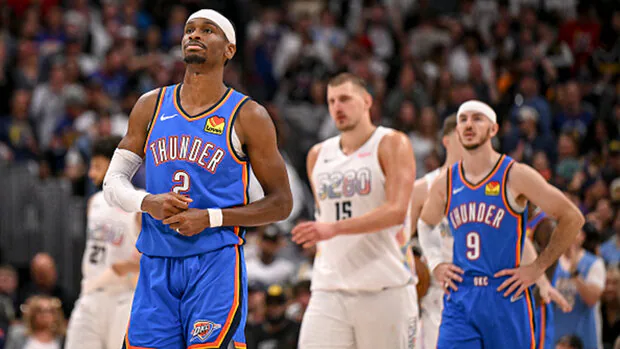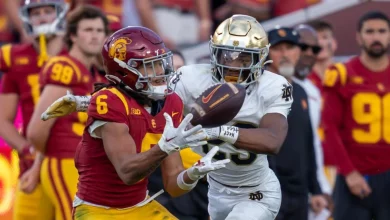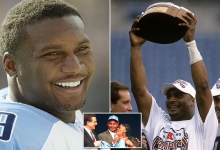NBA dynasties are not dead, but achieving parity is more complex than it seems due to financial structures, player movement, and evolving team dynamics. The balance between competition and dominance is shifting.

The question of whether NBA dynasties are dead is a pressing one for basketball fans, analysts, and teams alike. Historically, the NBA has seen periods of sustained dominance from a handful of franchises, with legendary teams like the Boston Celtics of the 1950s-60s, the Chicago Bulls in the 1990s, and the Golden State Warriors in the 2010s. These teams, built around transcendent players, defined their respective eras, winning multiple championships and often establishing dynasties that lasted for several years.
In recent years, however, some have argued that NBA dynasties are a thing of the past, citing the rise of team parity, increased player movement, and the league’s financial structures as factors that have diminished the longevity of any single team’s dominance. Others counter that the concept of a dynasty is evolving rather than disappearing. The reality, as is often the case in sports, is much more complicated than a simple “yes or no” answer.
In this article, we’ll explore the factors influencing the potential decline of NBA dynasties, how parity has become a goal for the league, and why the traditional concept of a “dynasty” may no longer fit into the modern NBA landscape.
The Golden Age of NBA Dynasties
Before diving into the current state of dynasties in the NBA, it’s important to understand what constitutes a dynasty. A true NBA dynasty is typically defined by sustained excellence over several seasons, often featuring multiple championships, consistent playoff appearances, and a dominant core of players who can carry a franchise to the top year after year.
Historically, dynasties in the NBA were rare but unforgettable:
- The Boston Celtics of the 1950s and 1960s: Led by Bill Russell, the Celtics captured 11 championships in 13 years, an unprecedented feat in professional basketball. Their success was driven by team chemistry, defensive prowess, and Russell’s leadership.
- The Chicago Bulls in the 1990s: Under the leadership of Michael Jordan and coach Phil Jackson, the Bulls won six championships in eight years, with two separate “three-peats” (1991-1993, 1996-1998). Their dominance was marked by Jordan’s excellence, Scottie Pippen’s all-around game, and the Bulls’ unmatched playoff performances.
- The Golden State Warriors in the 2010s: With a core of Stephen Curry, Klay Thompson, Draymond Green, and Kevin Durant, the Warriors redefined basketball with their “small-ball” and three-point shooting revolution. They won three championships (2015, 2017, and 2018) in four years and were often seen as the most dominant team in the league.
These teams showcased a level of dominance and sustained success that is hard to replicate in today’s NBA. But with the current dynamics of the league, is such sustained dominance still possible? Let’s take a closer look at the forces at play.
The Rise of Parity in the Modern NBA
In recent years, the NBA has prioritized creating a more balanced league, one where more teams have a realistic chance of competing for championships. Parity in sports refers to a competitive balance, where no single team dominates for extended periods and where multiple franchises are in the running for titles every season. In the NBA, parity has been facilitated through a combination of factors that include financial structures, the draft system, player movement, and the salary cap.
Financial Structures and the Salary Cap
One of the primary tools that the NBA uses to foster parity is the salary cap. Instituted in 1984, the salary cap limits the total amount of money a team can spend on player salaries each season. The salary cap was designed to prevent wealthy teams from amassing superstar talent, thereby ensuring that all teams, regardless of market size, had the opportunity to compete.
While the salary cap creates a more level playing field in theory, it’s not a perfect system. Teams with larger markets, like the Los Angeles Lakers and New York Knicks, can still attract top talent through endorsements and other financial incentives. On the other hand, smaller-market teams may struggle to retain their star players if they can’t offer similar financial incentives. The luxury tax — which penalizes teams that exceed the salary cap — is another tool designed to prevent wealthier teams from stockpiling talent.
However, even with these restrictions, financial disparities remain. Superstars are still in high demand, and teams that can afford to exceed the salary cap or make key trades often have an advantage. The fact that star players can choose to join forces with other stars (as seen with the Miami Heat’s “Big 3” in 2010 or the Warriors’ acquisition of Kevin Durant in 2016) has also led to the formation of “super teams” that challenge the concept of parity. In this sense, the financial structure of the league does not entirely eliminate the possibility of dynasties—it just reshapes them.
Player Movement and the Rise of Super Teams
Another critical factor contributing to the changing nature of dynasties is the increasing freedom of movement for players. The rise of player empowerment and the trend toward player-driven team building have reshaped the NBA landscape. LeBron James, Kevin Durant, and other superstars have increasingly taken control of their destinies, signing with teams that give them the best chance to compete for championships.
LeBron James is perhaps the most prominent example. After leading the Cleveland Cavaliers to an NBA championship in 2016, he left for the Miami Heat in 2010 to form a super team with Dwyane Wade and Chris Bosh. Then, in 2014, he returned to Cleveland and delivered another championship, before moving to the Los Angeles Lakers in 2018, where he won yet another title in 2020. LeBron’s ability to choose his destinations has allowed him to continually compete for championships, but it has also contributed to the shifting nature of team-building in the NBA.
Similarly, Kevin Durant’s decision to join the Golden State Warriors in 2016 was met with both praise and criticism. While it resulted in a period of dominance for the Warriors, it also sparked debates about the ethics of joining an already stacked team. Durant’s move, along with other examples of star players joining forces, highlights the fluidity of the modern NBA, where traditional team-building methods are often disrupted by high-profile free-agent signings and trades.
In this context, traditional dynasties may appear to be on the decline, as teams are constantly retooling and shifting their focus from long-term development to immediate championship contention. This has led to the rise of “super teams” that dominate for a few seasons, only to dissolve as players move to new locations, which makes sustained dominance a more difficult prospect.
The Impact of Social Media and the Player-First Era
In today’s NBA, the rise of social media and the player-first culture has also reshaped how teams are built and how players interact with fans and each other. In the past, superstars like Michael Jordan and Magic Johnson were tied to one franchise for the bulk of their careers. Today, however, social media platforms give athletes a global voice, allowing them to publicly express their desires and preferences, often influencing the decisions of other players. These dynamics have made team loyalty more fluid and less permanent, breaking down the traditional concept of a team-built dynasty.
Furthermore, the success of a team is increasingly tied to individual players’ legacies. While previous dynasties were built around teams and systems (e.g., the Spurs’ “Big Three” of Tim Duncan, Tony Parker, and Manu Ginóbili), today’s focus is often on individual stars who are marketed and recognized globally. The NBA, through its marketing campaigns, social media engagement, and international growth, has facilitated an environment where players are the central figure in team dynamics. This results in players changing teams more frequently in pursuit of championships and personal milestones, thus preventing the formation of long-term, sustained team dynasties.
The Evolving Definition of a Dynasty
So, are NBA dynasties dead? It’s more complicated than it seems. The traditional definition of a dynasty—dominating for multiple years with consistent playoff appearances, titles, and franchise stability—has shifted. Today’s NBA might not have as many dynasties that last for a decade, but it has evolved into an environment where teams can dominate for short bursts, often thanks to star players assembling themselves in pursuit of immediate titles.
In the past, dynasties were largely defined by the sustained excellence of one team. The NBA of today has moved away from that model, but that doesn’t necessarily mean dynasties are a thing of the past. It simply means the definition of what a “dynasty” is has changed. A dynasty might now look like the Golden State Warriors’ three titles in four years, or LeBron James’ four championships spread across multiple teams, or even the Miami Heat’s four straight Finals appearances between 2011-2014.
The changing definition of a dynasty reflects the NBA’s evolution, where parity and individual player agency are increasingly prominent. However, in the end, greatness still shines through. Teams that can assemble and maintain a winning core, whether it be for two or five years, can still claim to have created their own kind of dynasty.
A New Era for NBA Dynasties
In conclusion, the idea that NBA dynasties are dead is a misunderstanding of the league’s current state. While the traditional, long-lasting dynasties may be less common due to factors like increased parity, player empowerment, and financial restrictions









